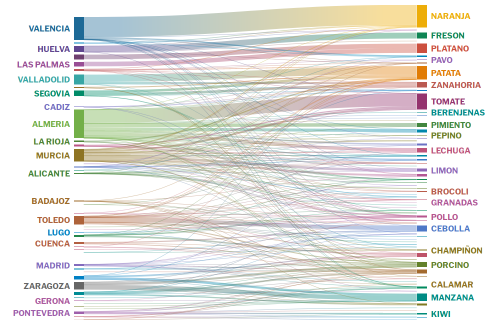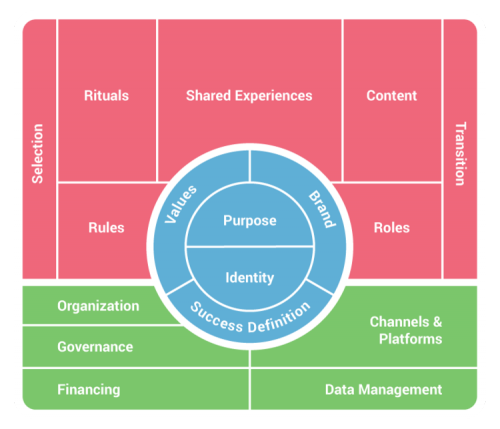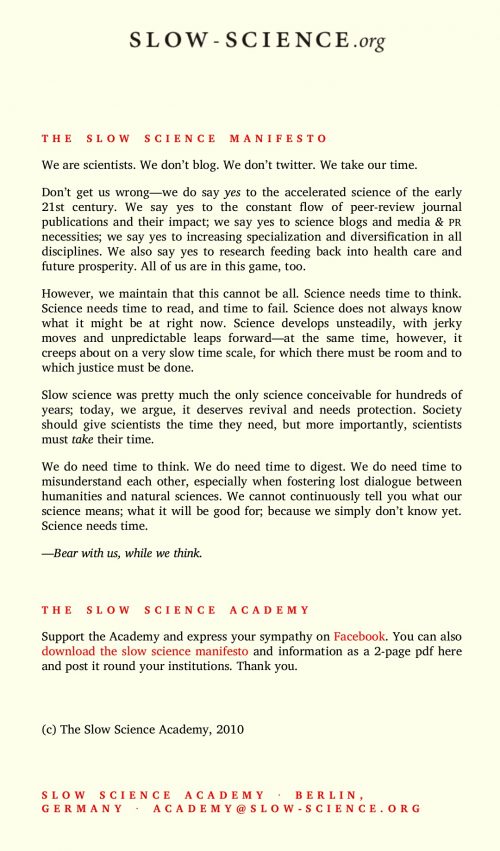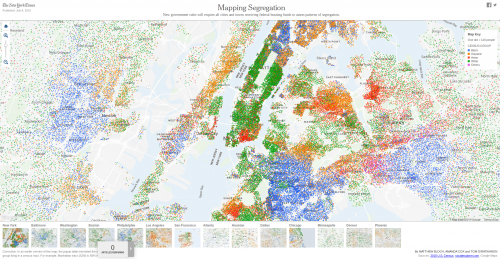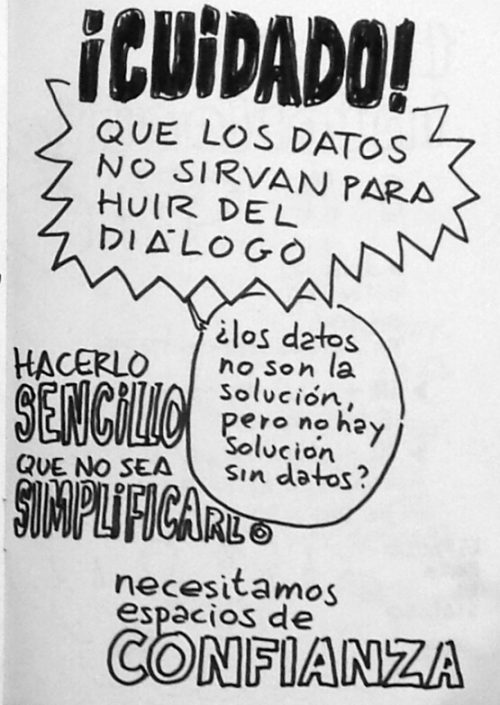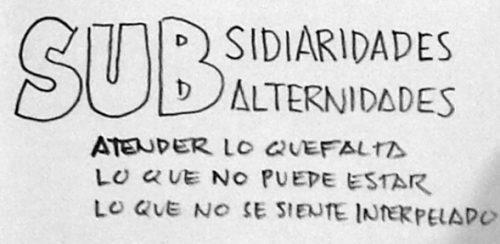La «guerrilla» de Lawrence de Arabia
«Dejar todos los libros que se han leído de lado, toda la teoría aprendida. Para que los libros no piensen por uno, si no que sea uno el que piense a través de los libros.»
Dejar un poco de lado los modelos teóricos y desarrollar una estrategia a partir de la situación real, de lo que realmente hay.
«La idea de totalidad choca y debilita la multiplicidad, las potencialidades de las partes.»
En la estrategia clásica todas las fuerzas se subordinan al estado mayor.
Sustituir la lógica jerárquica de la escalera: táctica, estrategia, medio, fin, batalla, guerra. Por otros tres elementos: algebraico, biológico y psicológico.
Los árabes podían ser eficaces a su manera, no a la manera clásica de hacer la guerra.
«La atención es un ejercicio de amor.»
La vía china del no-hacer: wu wei
François Jullien: «China permite mirar Occidente desde un afuera, desde un punto de exterioridad.»
François Jullien. Traité de l’efficacité»Tratado de la eficacia» y un resumen «Conferencia sobre la eficacia». Revisión del concepto de eficacia en Occidente y en China analizando el contexto militar.
La eficacia en Occidente sigue una lógica platónica. Se establece un modelo y luego se aplica a un caso, se ejecuta el plan, se aterriza la idea. Lo primero es el pensamiento, luego viene la fuerza de voluntad para ejecutarlo. La cultura del proyecto es platónica. Modelizar y aplicar. Pensar y ejecutar. Por este orden.
La eficacia en China para empezar se cambia por eficiencia. Ellos hablan de eficiencia. Allí no hay plan. Hay en cambio escucha y atención para detectar el «potencial de situación», el «factor facilitador», las potencias que existen en el entorno, qué fuerzas están trabajando lo real y se dejan llevar por ellas para ir a donde quieren. La metáfora sería el surfista que aprovecha las olas para llegar a la orilla.
En griego teoría significa mirada, capacidad de contemplación. El sentido predominante en China es la escucha.
En China, como hacía Lawrence de Arabia, parten de la situación, no del modelo. El gran general chino es el que sabe encontrar la pendiente para poder rodar.
No hay personas valientes y cobardes, hay personas en posición de valentía y en posición de cobardía. No depende del yo.
No hay medios y fines, hay propensiones. Hay potencias en lo real que hay que conseguir explotar y aprovechar. No hay una idea clara de finalidad, hay propensión. Si se tienen demasiados objetivos, si hay una fijación rígida en conseguir un objetivo se impide el movimiento, uno se inmobiliza. No hay una idea de progreso, hay una idea de propensión hacia una fuerza que te va a llevar, pero no de una manera prevista con anterioridad.
La idea de ocasión en Occidente es difícil de agarrar (por los pelos: la pintan calva). En China no hay que agarrarla, va madurando y cae cuando está lista. Alguien tiene que recogerla, por eso hay que estar a la escucha.
Cuando no hay potencial de situación, cuando no pasa nada. Es un momento peligroso. Hay que volver a la normalidad, hay que reaprender a convivir con la normalidad. Hay que volver a aprender a saber esperar. Película de Joaquim Jorda: 20 años no son nada.
La idea del disimulo de Jean François Liotard
Amador advierte que todas estas experiencias, estas ideas no hay que convertirlas en modelos aplicables a todos los casos. Podríamos decir que hay que mantener una relación promiscua con las ideas, no casarse con ninguna de ellas.
La idea del disimulo es una idea para una situación sin salida. Situaciones en las que el oponente tiene todo el espacio. Una situación sin salida es cerrada. Puede ser cerrada teniendo muchas falsas salidas, hay elecciones a tomar que no permiten salir realmente de la situación. Un supermercado con muchos producctos del mismo tipo; un sistema político en el que todos los partidos proponen los mismo. En estos casos hay «un código» que controla la situación: dice lo que es posible y lo que no, lo que es visible y lo que no, un código que se presenta como omnipotente, codifica todo lo que pasa. En estas situaciones, las opciones antagonistas tampoco dan salida, están también contempladas por el código, refuerzan al código. Hay veces que incluso legitima el código. Los enemigos del código están codificados por él mismo, construidos de la manera que él necesita, así que lo refuerzan.
Una manera de leer es intentar entender lo que el autor quiere decir. Otra manera menos torpe, dice Amador, es desarrollar nuevos sentidos cuando se lee. Esto lleva a no repetir lo que un autor dice, sino conectarse con lo que un autor dice, aprovechar su corriente de pensamiento (una manera muy china de leer).
Para definir o identificar una situación sin salida. El que controla los efectos (y los afectos) tiene el poder. Al otro lado, los que están en una situación sin salida, controlados, impotentes.
Cuando se habla con estereotipos se está usando el lenguaje del poder, del código, se es un eco del poder. Para Liotard no hay que pasar de la impotencia al poder, no hay que intentar esta vía heroica. Hay que pasar de la impotencia al «impoder». No propone ser dueños de los efectos, no propone ser soberanos, no pretende conseguir la soberanía, propone dejar de ser víctimas.
Características del disimulo
1. Se juega en el terrero del otro. La estrategia del disimulo, del pasador, juega en campo enemigo, no hay zona buena, no ha elegido su lugar, no se resigna a ella pero parte de ella. No realiza una acción heroica como el guerrero, sino una acción sutil, imperceptible por el código. El guerrero realiza una acción bella y después muere porque es detectado por el código.
El disimulo es una potencia de ambigüedad. Es una estrategia de supervivencia no de victoria. Estrategias informales.
2. Sensibilidad táctica con los símbolos. El disimulo promueve fidelidad a las intensidades, no a los símbolos. Los símbolos no hacen pasar intensidades, ya no. Lo que interesan son los símbolos que hacen pasar intensidades, que hacen ocurrir cosas, hay que estar dispuesto a traicionar los símbolos establecidos, pasados.
3. Flexibilidad moral o inmoralismo estratégico. Estrategia más que moralidad.

